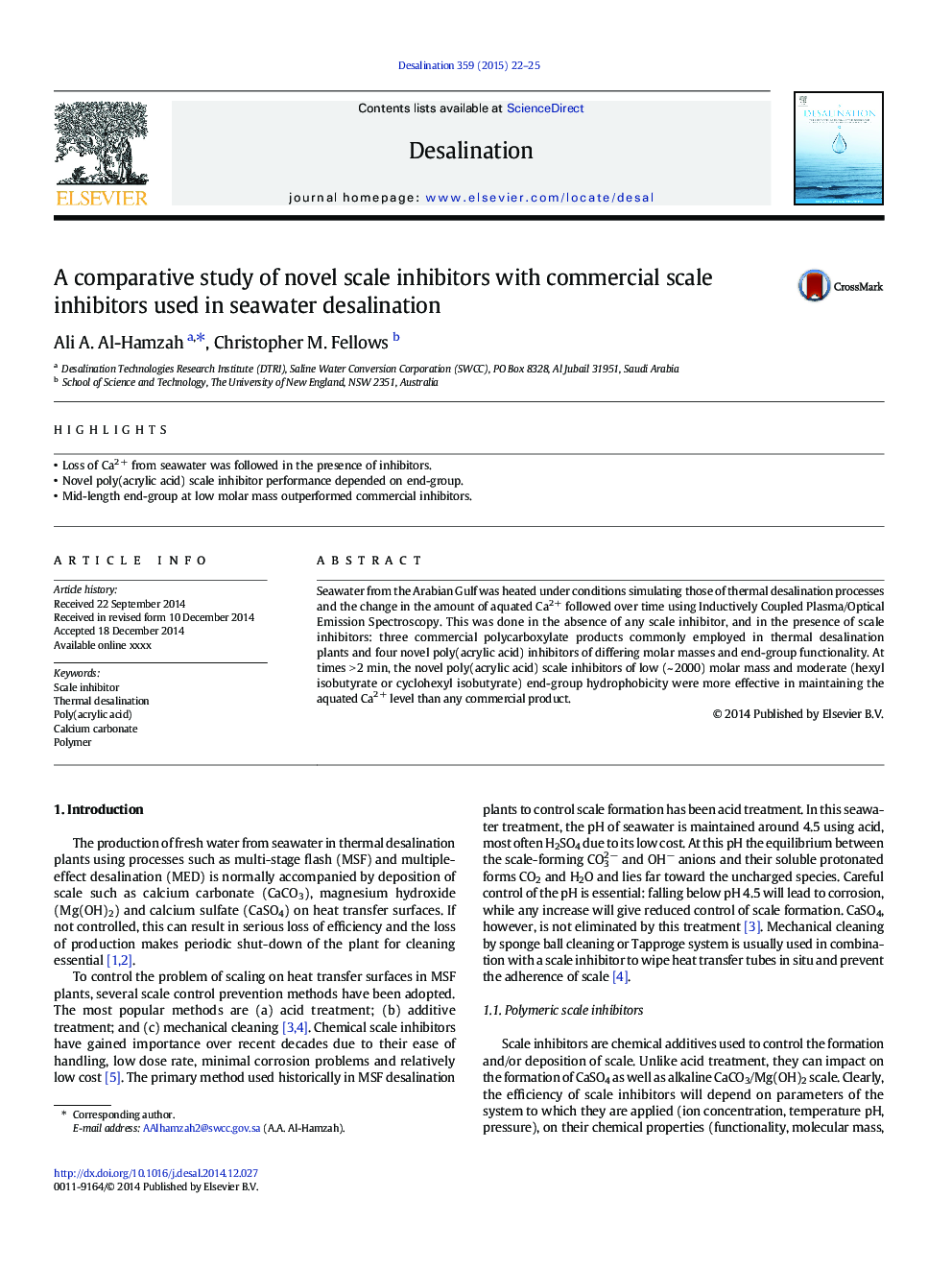| Article ID | Journal | Published Year | Pages | File Type |
|---|---|---|---|---|
| 7008386 | Desalination | 2015 | 4 Pages |
Abstract
Seawater from the Arabian Gulf was heated under conditions simulating those of thermal desalination processes and the change in the amount of aquated Ca2Â + followed over time using Inductively Coupled Plasma/Optical Emission Spectroscopy. This was done in the absence of any scale inhibitor, and in the presence of scale inhibitors: three commercial polycarboxylate products commonly employed in thermal desalination plants and four novel poly(acrylic acid) inhibitors of differing molar masses and end-group functionality. At times >Â 2Â min, the novel poly(acrylic acid) scale inhibitors of low (~Â 2000) molar mass and moderate (hexyl isobutyrate or cyclohexyl isobutyrate) end-group hydrophobicity were more effective in maintaining the aquated Ca2Â + level than any commercial product.
Related Topics
Physical Sciences and Engineering
Chemical Engineering
Filtration and Separation
Authors
Ali A. Al-Hamzah, Christopher M. Fellows,
